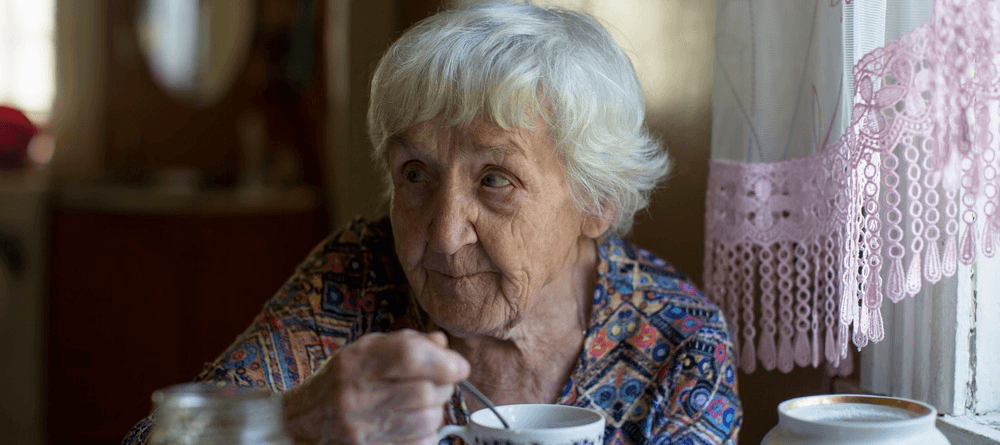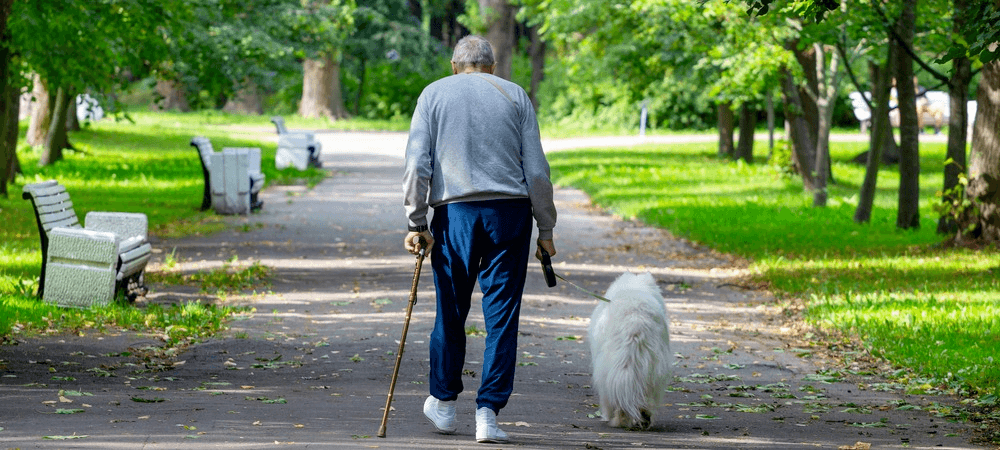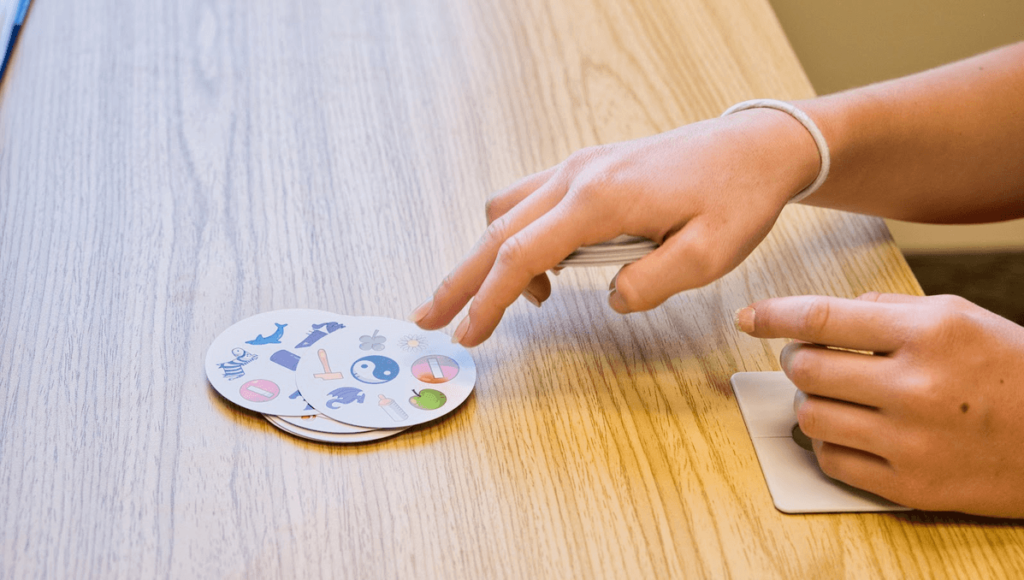Although dementia cannot be cured or reversed, physical therapy can delay the development of symptoms and extend the time these patients can continue to live their lives as usual.
Physical exercises can be beneficial for both physical and mental health. For example, physical activity can improve balance, strength, and cognition while reducing symptoms of depression and social anxiety.
In this article, we’ll answer some commonly asked questions about physical therapy and dementia, including…
- What are the physical symptoms of dementia?
- What can physical therapists do for dementia patients?
- What are the physical and emotional benefits of physical therapy?
- What types of exercises are suitable for dementia patients?
- How can you encourage physical activity at home?
We also explain the treatment approach we take for dementia patients under our care at Neural Effects.
Neural Effects uses the latest evidence-based techniques to stimulate the areas of your brain that need the most help. We are located in Provo, Utah, and serve anyone in Salt Lake City or the Utah Valley area. We are in-network for most types of medical insurance. Schedule your evaluation today.
Physical Symptoms: How Does Dementia Affect the Body?

Loss of cognitive skills, confusion, memory problems, and difficulty communicating are all well-known symptoms associated with dementia. However, this condition can cause a variety of physical symptoms too. It changes the way patients walk and talk, and even how their body works.
If you’re caring for a loved one with dementia, you must be aware of these symptoms developing as the disease progresses. This is where the help of a physical therapist may prove valuable. It’s impossible to prevent these problems, but working with a healthcare professional means they can identify issues at an early stage and develop a suitable exercise program to ensure your loved one continues to live a life that is as happy, safe, and healthy as possible.
Impaired movement
One of the early indicators of dementia is a change in the way patients walk. People with dementia tend to take short steps and drift to the side as they move. In some patients, these changes are visible even before any signs of cognitive decline. Gradually, as the disease progresses, the tendency is for patients to slow down even more and start dragging their feet, which increases the risk of falls.
Balance problems
Dementia can also affect spatial awareness. It’s not uncommon for patients to struggle with judging distances, which increases the risk of bumping into furniture or falling down the stairs. Trips and falls become more common.
Stiffness
Patients with dementia also experience muscular problems. The muscles become rigid, especially after a period of sitting down or sleeping. This makes it very difficult for patients to move.
Coughing and choking
As the disease progresses, patients may start to struggle to chew and swallow. This may cause patients to start coughing and choking, allowing food or fluids to be inhaled into the lungs, and causing potentially dangerous respiratory problems.
Weight loss
Decreased appetite, combined with problems preparing food in the kitchen and struggles swallowing, can make eating very challenging for dementia patients. Unintentional weight loss may put these patients at risk of malnutrition and increased frailty.
How Do Physical Therapists Help Dementia Patients?

Physical therapists can help dementia patients in a variety of ways. Engaging in physical activities is one of the best ways to address some of the symptoms described above without using prescription drugs. (Physical therapy also addresses cognitive and emotional symptoms, as we’ll see later in the article).
Physical therapists can identify and assess how patients struggle with activities of daily living (ADL) and develop ways to overcome problems using physical exercises. The aim is to use physical activity to maintain mobility and independence for as long as possible.
Therapy providers can use a variety of exercises to increase physical activity, from intense aerobic sessions to mild dance classes. Seated exercises are another popular way of providing physical activity, focusing particularly on stretching and flexibility exercises.
Dementia patients are not always able to express when they’re in pain; therapists are also trained to identify when patients are struggling and advise the family about ways to make the patient more comfortable.
The benefits of physical activity for patients with dementia can be felt across all stages of the disease. During the early stages of dementia, therapy may focus more on increasing physical fitness to allow patients to continue their daily activities. As the patient’s condition deteriorates, therapists shift their attention to practicing simple task-specific activities, such as getting out of bed or sitting in a chair. Fall prevention is a common focus throughout treatment.
Therapists will also advise patients about how much to exercise. If your loved one feels unwell during exercise or after increasing activity levels, stop and seek medical help.
If you want your loved one to engage in physical therapy (also known as physiotherapy), we advise looking for a therapist with experience treating older adults and neurodegenerative conditions. As a starting point, you can search a database created by the American Physical Therapy Association. Simply click on Find a PT and then search by location, looking for board-certified clinicians experienced with geriatric patients.
What Are the Benefits of Physical Therapy?

Leading an active lifestyle can have a massive impact on the well-being of patients living with dementia. Physical therapy can improve their quality of life by addressing physical, cognitive, and emotional symptoms.
Physical Benefits
Not surprisingly, one of the main domains where physical therapy can help is physical health. A person with dementia gains the same physical benefits from regular exercise as anyone else, including improved balance, cardiovascular fitness, and strength.
Improve balance and gait
Dementia patients often have problems with balance, increasing the risk of falls and fractures. Due to fear of falling, many patients prefer to stay inactive, which may worsen other symptoms. Physical therapy can help improve balance and gait (both gait speed and gait stability) by training them how to regain balance when they’re thrown off.
Relieve and strengthen stiff muscles
Dementia patients often complain of muscle stiffness and find it difficult to move, especially after a period of sitting down or sleeping. Some may also have muscle pains, cramping, and discomfort. Physical therapy can help to relieve and strengthen stiff muscles.
Improve cardiovascular health
Physical therapy can also improve cardiovascular health and fitness in dementia patients, especially if the patient started exercising when the risk of cardiovascular disease was still low. For example, a study showed that after six months of aerobic training, patients had lower blood pressure and could walk faster.
Improves sleep
Sleep disturbances are common in patients with dementia, but physical therapy can help them sleep better at night. Studies show that being active and engaging in physical activity improves sleep quality, decreases the number of times patients wake up during the night, and reduces the need for daytime naps.
Cognitive and Emotional Benefits
Physical therapy can boost confidence, decrease aggression, slow down disease progression, and improve quality of life, which in turn helps with cognitive and emotional well-being.
Slow down memory loss and cognitive function decline
Physical therapy — especially with aerobic exercise — can slow down the loss of cognitive functions. This type of therapy is associated with modest improvements in attention and processing speed, as well as executive function and memory. Researchers don’t know exactly what mechanisms are behind this effect, but it’s likely a mixture of increased blood flow to the brain, better sleep quality, improved cardiovascular and metabolic health, and fewer symptoms associated with depression.
Improve mood and decreases aggression
Anxiety, aggression, and depression are common among patients with dementia. A physical therapist can help your loved one be more active, which reduces anxiety, improves mood, and reduces the need for medication. Studies have found that physical therapy can reduce depression, as well as help the patient control symptoms of restlessness, irritability, and aggression.
Increase quality of life
Many dementia patients feel unmotivated as a result of cognitive dysfunction. Most don’t enjoy feeling unproductive. Physical activity can give these patients a sense of purpose to achieve a goal. Having a routine of physical therapy exercises to complete every day can provide dementia patients with more motivation and increase their quality of life.
Maintain independence
As the disease progresses, patients may struggle with daily activities like bathing, dressing, and eating. A physical therapist can provide opportunities to practice these skills during therapy, allowing patients to improve and keep doing their daily activities by themselves. The goal is always to maintain independence as long as possible. Physical therapy helps patients achieve better balance, greater physical function, and higher walking endurance, allowing them to safely live independently for a longer period of time.
Social Benefits
In addition to physical, cognitive, and emotional benefits, physical therapy can also offer dementia patients social benefits.
Reduce social anxiety
Unfortunately, there is still a stigma in society around dementia, which often leads to social anxiety for these patients. It’s not uncommon for dementia patients to be afraid of falling or somehow embarrassing themselves in public or feeling foolish because of physical or cognitive deficits. Many patients avoid social interactions and stay at home for long periods.
Physical therapy can help alleviate some of these fears by improving balance and reducing the risk of falls, as well as building confidence and resilience. This leads to less anxiety, and patients become more willing to participate in social activities.
Help build stronger social connections
Physical therapy can help increase social connections. Attending group therapy sessions allows patients to socialize and spend time with others. This therapy also encourages patients to be more active and spend more time outside, engaging with friends and family.
Help family members
It’s not just the patient who benefits from physical therapy. Physical therapists can teach family members how to prevent injury to themselves and the patient, along with providing instruction about assistive devices.
Physical therapists also educate caregivers on home safety. They can identify injury risk factors, share ways to reduce the risk of falls, and teach techniques to communicate better with dementia patients. This helps to ease the caregiver’s role and promotes a better quality of life for the patient with dementia.
Neural Effects uses the latest evidence-based techniques to stimulate the areas of your brain that need the most help. We are located in Provo, Utah, and serve anyone in Salt Lake City or the Utah Valley area. We are in-network for most types of medical insurance. Schedule your evaluation today.
What Type of Physical Exercise is Suitable for Dementia Patients?

As dementia typically affects older patients, certain physical activities may not be advisable, especially as the disease progresses. Physical therapists can evaluate each patient and design programs that fit their abilities and needs. For example, some patients may have exercised regularly throughout their life and may be able to engage in strenuous sports, while others may need gentler activities.
Typically, the type of exercises recommended for dementia patients include:
- Aerobic exercises
- Resistance training
- Stretching and flexibility
Aerobic Exercise
Aerobic exercise is any type of cardiovascular conditioning where your breathing and heart rate go up. This is the most common type of exercise recommended for dementia patients (and is something we employ at Neural Effects).
All types of physical activity are good for dementia patients, but studies show that high-intensity exercises, in particular, have especially attractive benefits for these patients, including improved cardiorespiratory conditioning, increased stamina, and better general fitness.
In addition to physical benefits, aerobic exercise may also help slow shrinkage in the hippocampus, a part of the brain that deals with memory and which deteriorates as dementia progresses. One possible explanation involves better blood flow to the brain, reducing the harmful effects caused by dementia in the hippocampus and slowing down the decline in cognitive function.
Aerobic exercise also stimulates the release of a compound in the brain called brain-derived neurotrophic factor (BDNF). BDNF stimulates the connections between neurons and promotes memory, making it very helpful for healthy cognitive function.
Examples of aerobic exercises suitable for dementia patients include walking, jogging, and biking outdoors, or heading to the gym to use a stationary bike, elliptical trainer, pedal exerciser, or treadmill.
Resistance Training
Resistance training involves any form of exercise where you lift or pull against resistance. This type of exercise also has benefits for dementia patients, including improving muscle strength, balance, and posture and reducing the incidence of falls.
In addition, patients with dementia and mild cognitive impairment also experience significant improvements in cognitive function, selective attention, memory, muscle strength, and fitness after a period of resistance training.
Resistance training seems to be able to protect certain areas in the brain from neurodegeneration caused by dementia. Similar to aerobic exercise, researchers have also detected fewer changes in the hippocampus of patients who engaged in resistance training compared to those who did not.
Examples of exercises include using dumbbells, bodyweight, kettlebells, power bands, or any other external resistance. To ensure the safety of dementia patients, however, it may be better to use machines rather than weights to avoid injuries from dropping the weights.
Stretching and Flexibility
Less is known about the role of flexibility for dementia patients, but many physical therapy programs use it with positive results. For example, stretching exercises are commonly used for patients with a restricted range of motion in certain joints. The aim is to regain enough range of motion to carry out normal daily activities.
A recent study shows that simple exercises, including stretching, balance, and range of motion exercises, can be just as effective in slowing mild cognitive decline as aerobic exercises. Though stretching does not increase heart rate, it does require concentration to achieve the correct forms. Some researchers suggest that the amount of focus needed to complete stretching and balance exercises may stimulate the areas of the brain responsible for thinking and memory, thereby slowing cognitive decline.
For dementia patients, good examples of stretching exercises include Tai chi, Qigong, yoga, or even simply gardening, where you have to bend over and gently pull weeds. With the help of a physical therapist, these patients may also engage in a series of exercises done typically in a chair, such as pretending to march while sitting, turning the upper body from side to side, clapping under the legs, and making circles with the arms, among others. Exercises with the neck, like chin tuck and head tilts, are particularly useful to address choking and swallowing issues.
How Can You Encourage Physical Activity at Home?

Even if your loved one is attending physical therapy, it will still be beneficial to do some exercises at home. If they’re coming to Neural Effects for treatment, at the end of each session, our therapist will provide a list of activities to do at home, including some physical exercises and cognitive games.
Before they start any exercise at home, consider seeking healthcare advice from a dementia care specialist, especially if they have a medical condition such as heart problems, high blood pressure, or arthritis. These conditions will not necessarily stop your loved one from exercising, but you will need to choose activities that are suitable for their level of ability.
Before you and your loved one decide what to do, consider the following:
Understand the patient
Do they like going outside for a walk, or would they prefer dancing classes? Being familiar with their hobbies, social interests, and recreational activities will help you plan the best activities. It’s also important to keep activities interesting since it’s easier for dementia patients to experience boredom.
Don’t overstimulate
Don’t overstimulate a person with dementia. Avoid crowded and noisy places as needed; many people with dementia find them overwhelming.
Take your time
Don’t hurry dementia patients to finish their exercise. Give the patient the time and space they need to do as much as possible. If they’re struggling, break down activities into simple, manageable steps.
Exercise in a safe working area
Always exercise in a safe and clean area. Make sure surfaces are not cluttered and that there is good lighting to reduce the risk of falls.
Use activities suitable for the level of ability
Always use exercises that are suitable for the patient’s level of ability. Exercises that are too hard may make the patient feel inadequate and stressed. Remember that ability will change as the disease progresses, so you may need to adapt exercises on a regular basis.
Pick the best time during the day to exercise
To make it more enjoyable, make sure you exercise when the patient is at their best. They may prefer going for a walk first thing in the morning or spend the afternoon gardening.
Find a suitable activity
Local community groups, sports centers, and some nursing homes provide a range of activities specifically for older people, such as ball games, seated exercises, tai chi, music and dance, indoor bowls, or swimming.
If your family member prefers to stay at home, activities like walking, gardening, and light housework are also suitable for everyday exercise.
Cognitive & Physical Therapy for Dementia at Neural Effects

Physical therapy provides a wealth of benefits for dementia patients, whether they’re suffering from Alzheimer’s disease, frontotemporal dementia, or another neurodegenerative condition. At Neural Effects, however, we’ve found that combining physical and cognitive therapy can further enhance the positive effects each therapy can offer dementia patients.
In addition, dementia can involve autonomic nervous system (ANS) dysfunction. The ANS drives many of the involuntary processes that happen throughout the body, impacting nearly every organ. Your heart rate, blood pressure, urinary function, digestion, cerebral blood flow, and more are intimately tied in with the ANS. Our therapists are trained to work with ANS issues and help patients work through exercises designed to calm the ANS.
Using a program involving multiple approaches improves cognitive function and mood and helps patients with dementia continue daily activities. The same approach can also help elderly patients without significant cognitive issues and patients with mild cognitive impairment.
All patients who come to us undergo a thorough neuropsychological assessment before treatment starts to find out what kind of cognitive issues are present. This exam includes tests to assess memory, attention, language, and executive function, among others. We can contribute to a new dementia diagnosis or create a care plan following one.
Our treatment then involves a variety of therapies — including physical therapy, cognitive therapy, occupational therapy, and others — depending on the problems detected during the initial evaluation. Each session includes a period of aerobic exercise, typically on a treadmill or stationary bike, followed by different therapies to improve cognitive skills.
To schedule an appointment, please contact our team.
